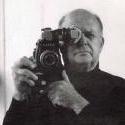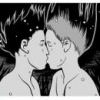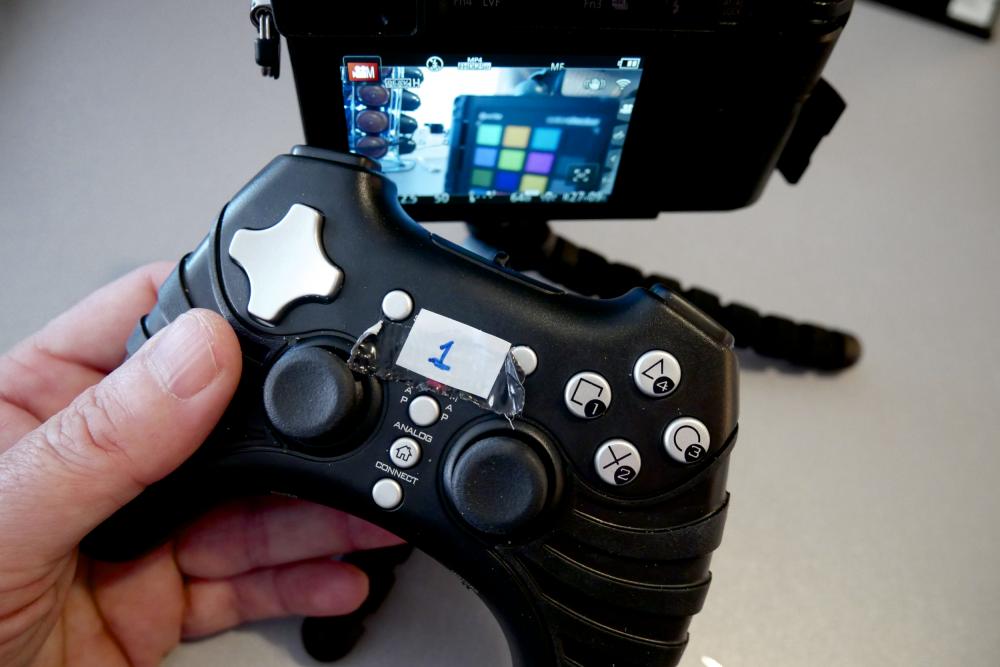Leaderboard
Popular Content
Showing content with the highest reputation on 06/13/2017 in all areas
-
so what? I am using auto-shutter all the time. Do you notice it in my videos? Well, I dont - which is good for me, I am apparently easier to please4 points
-
Panasonic GH5 - all is revealed!
Fredrik Lyhne and one other reacted to PannySVHS for a topic
Dear Jon, yes, scenario is the main criteria, be that climatic, experimentally motivated or commercial ones f.i. I don´t think it is ETTR what you are doing. I think it is getting the maximal amount of light before the nasties are appearing, in order to avoid noise, in order to get the maximum potential and not always immediately visible visual information. With RAW it is supposed to be ETTR big time. Taking pictures with my GF1, even in RAW, it is a no go. But exposing as much as possible is still desirable regarding quality of the signal. I think, it is that what you are aiming for. And sometimes that can be -1/2 dialed into the camera, because sometimes camera meters are different than others. In my bright sunlight scenario with huge dynamic range and plentyful light to feed the sensor, the risk of noise was much lower than the huge risk of nastily overexposed mess. That mess could have never been rescued afterwards, not technically nor in any pleasing visual manner at all. For the jerky movement with auto shutter, I can see it very often too. Just check my bicycle video, if you like for stuttery motion because of that. I filmed a little exercise two weeks ago, with auto shutter, -2/3, in softer GX85 HD and by accident with gruesome ISO 1250. But it turned out kinda pretty, because amount and even more the quality of natural light was beautiful. Regarding color shifts, that is even a thing one can try in Resolve. Pure white can expose nasty greyish purple if pulled down in post. So for filming or acquiring material, it sure will show how we expose. And getting the curves right in Resolve can be a tricky one too, sometimes a lucky one. Once I graded one of your G81 videos and it turned out awesome, because you had captured great quality light. Event though I dled it from youtube. In Glenns videos I never noticed stutter, neither in Jase´s. Only in mine, which is not fair! So I usually prefer to stick to a fixed shutter. I actually recognize stutter and jittery motion, with anything that doesnt involve faces. And on my HDMI monitor I can see the jagginess, I wasnt able to see on the VGA I have been using until only a few months ago. Tilts and Pans sometimes look terrible. It´s quiet an art to do handheld with these Panny photo cams. Was amazed @mercers videos because his camera movement always looked stunning. I wish you all happy shooting and experimenting.2 points -

Lenses
Chris Oh and one other reacted to Gregormannschaft for a topic
Just bought myself a Black Pro Mist 1/4 after watching your stuff over the past few months. Hoping I can get at least somewhere close to the look you manage to achieve, fine stuff! And I ordered some flat black spray paint for this adapter. I'll keep you all updated, sure you're all desperate to have a progress report.2 points -

Panasonic GH5 - all is revealed!
Fredrik Lyhne and one other reacted to jase for a topic
I am by no means experienced in the department of grading, but my last 3-4 videos or so i underexposed with -2/3 and I love the results I am getting. However I also have to conclude that my GX80 is sometimes overexposing, so turning it down by -2/3 makes the zebras go disappear in the highlights area.2 points -
So as I've hinted more than a few times in the other thread, the discovery of the Cinelike D and other bits and pieces for the GX80 etc was actually a bit of a happy accident while I was trying to do understand the Panasonic wifi stuff for something else. And here is that something else. Well at least a prototype of it but it is fully functioning and will just be finessed a bit more. Basically, its a wireless hardware remote for the G series cameras that operates over wifi and can currently control record start/stop, shutter speed as well as aperture and focus if you're using a native lens, including a single shot AF switch. For the non-Cinelike D cameras that can now be hacked to have Cinelike D there is also a dedicated button to toggle it on and off so you don't need to mess about with browsers and computers or smartphones anymore. Focus and aperture control are done on a joystick and everything else is switches. I'll be putting a layer switch on so that it can be toggled back and forth to a different control mode for ISO, WB and other stuff. As this is the prototype it is nowhere near the finished piece and it will be reduced in form factor to just be about the size of the control board. Power is by any USB source so there are billions of options. There is a lot more finessing and feature enhancement to go on with regard to the focus control (and yes, I know exactly what you'll all want it to do !) but the hard part is done now. It does support the display of the values on a screen and I'll be sorting some options out for that. The purpose of this gadget is primarily for use with a gimbal but it can also be really useful on a tripod bar for anyone shooting live event stuff. For cameras with inbuilt lenses I'm going to add a zoom mode on the joystick. A very quick very rough demo so you can see it in action. Any lag you might see between me operating the controller and the camera video is just a sync issue between me throwing the two recordings on very quickly1 point
-
It has lower resolution than the 28mm 2.8, which is due to its nature of having shorter focal length. Didnt put it to proper testing when it comes to bright sunlight other "bad" light though. It is not a resolution monster for sure. You might wanna get the Tamron 20-40 2.7-3.5 for much cheaper. It should be just as good on the wide end. If shot on APSC even better due to less vignetting compared to photo full frame format.1 point
-
Check out the SLR-Magic Vari-ND Mk II. For some reason it seems to fly under the radar, but it's fantastic. No sharpness hits or color casts, and it has a locking ring so that you can rotate the filter around to adjust for polarization.1 point
-
Its definitely smoother but its still disruptive as you've got hands on to do the turning, which sounds like it would be a big issue for the application you're talking about. Depending on the filter there is also colour shift issues to be considered but its one of those things where there are plenty of reviews online so you you should be able to find one that suffers less from this. The version Aputure do of their Lens Regain with variable electronic ND looks like a great solution but it comes at a price at around $700. One potential way of giving you a different solution would be for you to lock your exposure put a fixed ND on which is strong enough for the brightest zone and and then ride the ISO for those exposure changes to effectively counteract it for darker zones. Unless you go too mad, there is enough wiggle room with ISO on most cameras to tolerate that without destroying the image. It will still be stepped so not as smooth as a variable ND but at least you know you won't be getting colour shifts etc. I know exactly the person that could offer you a small handheld solution to do that wirelessly .... If you look at this video from my controller yesterday, you can at least get an idea of how riding the ISO (or the aperture or shutter speed actually) would look. As I say, its stepped so nowhere near as smooth as a variable ND but its not too bad (and could be smoothed further quite easily in post). Ignore the fact its running on a gamepad type controller as that sort of function can easily just be put on a tiny controller with a few buttons on to do what you want.1 point
-
I would be lost without a variable ND. It is true they degrade the image more than single NDs but there are some high quality ones where I think the benefits outweigh the negatives. I do recommend getting one with hard stops, so you avoid the dreaded X pattern that can occur if you add too much. But, with your native lenses and desire to move around, you may want to test Shutter Priority mode. I recently used it with the FZ2500 and the change in exposure was fairly gradual. You can also use zebras and exposure compensation so you can stay within your ETTR preferences. As I mentioned before, you can add a variable ND to your lens, to trick a more open aperture and use auto ISO with a limiter. Six months ago I would have scoffed at the idea of shooting in Shutter Priority but as I was, I think you may be pleasantly surprised. And I assume if the exposure change is too jarring, you could isolate it in post and soften the change. Or even cut around it. It's like walking with IS... show that angle until it doesn't work, then cut to a different angle or shot. As long as you get coverage, you'll always have another angle to cut to... or maybe a jump in time. There are workarounds for everything. We aren't Hollywood directors with focus pullers and tape measures, sometimes we just have make do with what we have and figure out a way to work around it.1 point
-
Idk, I think it probably works like AWB. If there is a need for exposure change, then the shutter speed may change, or maybe the aperture will, or the ISO. It would be interesting to know which changes when, but I don't know if many cameras tell you that. There are ways to trick the camera like an ISO limit. Or with compacts that have internal NDs, when in Shutter Priority mode, I would limit the ISO, enable the highest strength of ND to attempt to force the aperture to open all the way for shallow depth of field. This way if I moved the camera, I could get a gradual exposure shift while still keeping within the +/- exposure parameters I set.1 point
-
I actually don't disagree with you, Jon. If I ever shoot in any auto mode, I always shoot in Shutter Priority, but the only time I ever do that is with compacts or bridge cameras. But Jase and kidz have been using shutter speed to aid their exposure, instead of NDs, for years and it works for them, and I enjoy their videos... so who am I to say. Unless you're shootings narratives, it probably doesn't really matter anyway. But then again, I only shoot wide open and use a variable ND to expose, so what hell do I know.1 point
-
1 point
-
I see both sides. I think you should have a festival strategy. Not all films are right for all festivals, so I wouldn't submit both to every one you can find, or afford. But don't limit yourself either. The problem with Vimeo only is that you will need to market your films. Staff picks don't happen by accident and unless you are getting thousands of views, what good is a Vimeo only strategy? I also think having two completed films can show that you are prolific, with multiple ideas and someone passionate about their work. But in the end I think you need to sit down and think what you're trying to accomplish with your films? Are you trying to get a ton of views? Are you trying to get funding for a bigger film? Or do you just want your work viewed and critiqued by as many people as possible... or the right people? The problem with all of this, is there is no right or wrong answer and you can only market yourself so much before a little luck comes into play. In the end, it all comes down to the work and finding the right audience for it. I have heard that some people will reach out to movie review/critic sites... there are tons around for no budget/micro budget filmmaking. And a lot of these sites offer a paid review option. If your films fall within a niche you could get a lot of attention from the specific fans that like your types of films. Idk, interesting topic, good luck and keep us posted with your films.1 point
-

Two Things I've Learned - Shooting 16mm Glass on the Blackmagic MIcro
PannySVHS reacted to AaronChicago for a topic
Yeah they're a fun IT company. They're allowed to drink beer at 4 o'clock.1 point -
Update: Sent my NX1 into service and it was repaired and covered by warranty - replaced a 'PCB' at the top of the camera and is now working1 point
-
Thanks jon. I think I will try to do some tests on my own to see whether I can see the difference in my work. On a sidenode: god, whenever I watch your videos I feel the urge to buy the Summilux 12mm at an instant. As soon as we get the successor of the G85 that will enable the Teleconverter option also in 4k, this will be it for me.1 point
-
Cheap vs Expensive Camera Blind Test
TrueIndigo reacted to Aussie Ash for a topic
TrueIndigo "I did lapse recently though, and got the G7 because there was a good deal going on it, presumably because it's now an outgoing model. At £380 for the body, I think it must be the cheapest new camera I've ever bought. After experimenting with various Mods to the Natural picture profile and Daylight white balance, I'm seeing an image not so different from the Nikons which I love. Way back I bought a GH1 when it first came out, so I still had a lot of MFT lens adapters and enjoy using my vintage Nikon AIS prime set. My main reason to buy it though (after a long time shooting video with DSLRs) was not so much about image, but a usability consideration: the opportunity to have a high res EVF for hand-held shooting (using a pistol grip to hold it to my eye). Feels like shooting Super 8 all over again, and I actually enjoy using this little camera. I think you can't underestimate how important the usability and pleasure of actually picking up a camera becomes, now that image quality is so good on almost everything. " Kubrick loved his Arriflex 35-2C because it was so portable.....the jolly thing weighs 7kgs(14lbs) with 200 feet of film !!! We take for granted camera and lens under one and a half kilos and small enough to be inconspicuous in public places1 point -
Panasonic GH5 - all is revealed!
Fredrik Lyhne reacted to PannySVHS for a topic
I do that when in bright sun light filming docstyle. Autoshutter and -1/2 to -2/3 underexposure with 95% zebra.1 point -
Two Things I've Learned - Shooting 16mm Glass on the Blackmagic MIcro
AaronChicago reacted to PannySVHS for a topic
Nice achievement. I like the rhythm and pace and framing and directing. Storywise it is what it is, done with the intention of the client. Pretty lady in there too:)1 point -
Cheap vs Expensive Camera Blind Test
BTM_Pix reacted to Mattias Burling for a topic
No its actually quite simple. The introduction prices are pretty much same. Then prices are even a bit higher due to higher salaries but also higher sales tax (which is awesome imo, free healthcare, dental, college, etc, bla, bla, bla). But the big issue is that mirrorless cameras aren't selling here. I mean at all. Some do. The GH4 for example has only recently dropped sub $1k. But lower end like the G7, gx80, g80.. they can't even give them away. So they start dropping fast and have great discounts already the first week. So if that's for new cameras, what is the guy selling used gonna do? In Sweden we always start of by calculating a minimum of 30% off on retail. And thats from day one. If you only bought the camera 10minutes earlier and only taken one single image there is no way in hell I would give you anything above 70% of retail. (In reality its two weeks because thats the return period, by law.) And the retail stores sell just as cheap when they get tradeins. Plus they never use bogus words like "refurbished". Honestly, Im not sure "refurbished" would be legal. The correct term they use is "used". And that lowers prices. Btw, refurbished...common.. people treat them as new when some guy have wiped the screen and maybe done a factory reset An exception is Canon and Nikon. They hold their value extremely well. Not their mirrorless, they are for free1 point -
I'm almost done with two films... Advice?
Liam reacted to BenEricson for a topic
Less is more. I would push them out at separate times, probably the better one first.1 point -

Would You Perhaps Be Interested In A Different GX80/85 Colour Profile???
jase reacted to Grégory LEROY for a topic
I really like the look of your video, congrats. This 15mm lens seems amazing, I didn't know this Tiffen Ultra Contrast 3. Is it possible to increase the 1080p bitrate with this hack?1 point -
Two Things I've Learned - Shooting 16mm Glass on the Blackmagic MIcro
Ed_David reacted to BenEricson for a topic
Thanks. Gotcha. Come to think of it, most of the nice Digital Bolex stuff I have seen avoid those scenarios... It was overcast but well lit, pretty much optimal for the limitations you're describing. For some reason I thought you were shooting a doc or narrative with this setup, just remembered that was the Ursa Mini.1 point -

Cheap vs Expensive Camera Blind Test
Mattias Burling reacted to BTM_Pix for a topic
Always amazes me too. Just looking at numbeo.com comparing prices of goods where I live compared to Sweden and according to that I reckon me an Mattias could have a mutually beneficial arrangement if he gets gear for me there and I pay him in beer, tomatoes, oranges, petrol, Levis or men's leather business shoes.1 point -
Building an Anamorphic Lens Kit
Justin Bacle reacted to dontthroworanges for a topic
Exactly what I needed to know! The rubber strap wrenches are on their way. Thanks!1 point -
Two Things I've Learned - Shooting 16mm Glass on the Blackmagic MIcro
Chris Oh reacted to BenEricson for a topic
This has so much nice texture to it. Curious why you decided to go with the Micro rather than a digital bolex? I know they're cheaper and you get 60p with the micro, but the Digital Bolex is pretty special. Shot this 3 years ago. The movement you get on Super 16mm zoom lenses is one of my favorite things ever. Svitar 26mm 1.1 C Mount Lens and a Som Berthiot 17-85 f3.8 Compact Zoom Lens. I really recommend the 26. Razor sharp at 2.8 and on, but a really cool look if you shoot a 1.1 wide open.1 point -
Panasonic GH5 - all is revealed!
Fredrik Lyhne reacted to tonysss for a topic
According to my experience, with (GH4, G80, GX80, GH5) Expose maximum to 0 ,but mostly better slightly negative, If even slightly overexposed the colors disappear and the predominant yellow (waxy skin) , and mainly in combination with negative contrast ! In this test it is clearly visible, exposure +1 and red from the skin is out ! http://www.thehurlblog.com/panasonic-lumix-dmc-gh4-vlog-l-latitude-test-cinematography-education/ my exposure Zebra max. 90% in skin My current setting GH5 : Cine D 0,-5,-5,-5, 0 iDynamic : standard WB : Auto A:5 M:4 and 0 and mostly slightly negative exposure. Panasonic and ETTR It does not fit me, sorry... Before that I had the Sony, and that ETTR was ideal. (a6000, a5100, A7S , a6300)1 point -

Lenses
Gregormannschaft reacted to Chris Oh for a topic
flat black paint? also, unrelated. any footage of Canon FD 20mm 2.8? Couldn't find much online...1 point -

Lenses
PannySVHS reacted to Matt Kieley for a topic
I'm developing a mocumentary project with the style of 16mm documentaries like Crumb and American Movie, so I tested my Fujinon 18-108mm c-mount zoom on the Panasonic G7, in CinelikeD with Super 16 Gorilla Grain. I like the results so far. I was pleased that the Fujinon barely vignettes in 4K, only really when it's focused close. It seems to work better if I'm 5-6' away. This was mostly shot wide open at f/2.5, with maybe one or two F/4 clips. I still need to test this at more f-stops and distances.1 point -
So...... A bit of an update I've spent the past few days redoing this from the ground up and there's been what you might call 'a bit' of progress. The camera functions are now controlled by a gamepad, which gives a bit more scope in terms of buttons etc. By separating out the part that does the actual talking to the camera, this means that that can be smaller for mounting and the choice of the input device is now far more flexible as it can support pretty much any USB device that can be attached to it. In this version, the gamepad itself is wireless too so not only is it a lot neater but it can also be used to extend the overall distance of wireless control (its range to the control box is added to the range from the control box to the camera). I can also make it support multiple devices so you could have something smaller just to do basic control (or a USB numeric keypad would be quite good for that actually) and then use a more elaborate one when needed. Or do both simultaneously if you want control of exposure and someone else to do focus etc. Speaking of focus, this is now controlled by an analog stick so has a bit more feel to it (ignore the transitions in the video, the debug mode makes the control much coarser) with a press in the centre of the stick activating a one shot AF. If your camera has a powered zoom lens (hello LX100 etc) then this is controlled from the same stick by pushing forward and back. I believe that this will also work with those MFT lenses that support power zoom but I don't have one so I can't confirm that. I've made a drivable AF joystick point mode which you activate by pressing in on the right hand analog stick and then using the D Pad to drive the focus point around the screen and then pressing in the stick again to action it. There will be more focus enhancements coming......... The shutter speed and aperture are now controlled by the shoulder buttons on the gamepad and the ISO is now also directly switchable on two buttons. I've got a few more enhancements coming over the next few days as well so I'll keep you informed. In the meantime, here is a video of it controlling a GX801 point
-
Cheap vs Expensive Camera Blind Test
Aussie Ash reacted to TrueIndigo for a topic
I also think the Panasonic G7 is an important low cost UHD camera. During the period when I was making decent money, I used to buy a new camera every year, as a personal exploration which I enjoyed. Last few years though I had to stop that, but strangely didn't miss it. I sold off a lot of stuff (currently down to five stills cameras and two camcorders) and spent more time exploring the cameras I already had, rather than exploring yet another camera. Because I really think we have been in the era of "good enough" for some time now. We can make a solid starting point for colour grading and using creative LUTs which can radically change the look of the final image anyway. I did lapse recently though, and got the G7 because there was a good deal going on it, presumably because it's now an outgoing model. At £380 for the body, I think it must be the cheapest new camera I've ever bought. After experimenting with various Mods to the Natural picture profile and Daylight white balance, I'm seeing an image not so different from the Nikons which I love. Way back I bought a GH1 when it first came out, so I still had a lot of MFT lens adapters and enjoy using my vintage Nikon AIS prime set. My main reason to buy it though (after a long time shooting video with DSLRs) was not so much about image, but a usability consideration: the opportunity to have a high res EVF for hand-held shooting (using a pistol grip to hold it to my eye). Feels like shooting Super 8 all over again, and I actually enjoy using this little camera. I think you can't underestimate how important the usability and pleasure of actually picking up a camera becomes, now that image quality is so good on almost everything.1 point -
Lenses
jase reacted to Fritz Pierre for a topic
Agreed...except one of the best aspects of that lens is the fact that it's a pancake....on a stabilized camera, you can be on any street corner grabbing stellar footage while attracting no more attention than a tourist!...huge value in that stealth factor for me...I've actually contemplated the 14mm 2.5 Panny pancake for this very reason...they are tiny and optically excellent for the price!1 point -
I'm about to start a new thread with a practical application of all of this poking around that some of you may be interested in.......1 point
-

Transcoding anamorphic footage
Georgios reacted to AaronChicago for a topic
I've had a hell of time editing 4K anamorphic 4:3 footage from the GH5. I guess it's the scaling that is slowing it down. Do any of you guys transcode your footage into the stretched aspect before you start editing?1 point -
iMac Pro
graphicnatured reacted to hijodeibn for a topic
My Gosh, this guy is telling every raider out there he is a good prey to save the day…..1 point -

Help choosing best camera in budget for VFX work?
Rinad Amir reacted to Kristoferman for a topic
What you're looking for doesn't exist for your price point, sorry. The fs700 is the closest probably but it's still more expensive with a raw recorder and doesn't do autofocus very well. Also no stabilization. So yeah, what you describe would be pretty amazing for less than $3000 but I wouldn't expect all those boxes to be ticked any time soon1 point -

Tiffen Ultra / Low Contrast filters
Gregormannschaft reacted to Zak Forsman for a topic
yeah, they all do. tiffen black satin has an unusual shape. distractingly so. shaped like little cowboy hats if i recall correctly. so i returned it. in wanting to introduce halation and lowered contrast, I've switched to vintage glass instead of filtration. this is why i'm so happy with the Dog Shidt Optiks set I purchased. Here is a video from Bob Gundu that shows the halation you get using these. I think it's perfect.1 point -
So I bit the bullet over the week and bought the filter. From what I had read the filters work by spreading the light around the image, which is different to simply using a low contrast lens I think. And besides that, I don't want to add another lens to my collection when I already have three superb ones. I started with Ultra Contrast 3. It had good effect but I thought I'd go further so this morning I received the #5. The filters have an immediate effect of making the image look way more filmic. The reason for this is that really do spread the light around the image - but it's not so simple. They take in more ambient light and thus ambient colour. The result is that you get a much more balanced picture in terms of colour and tonality. These filters really are something magical. I have been shooting a fair bit with them over the past few days and will be putting together a video, but for now here's a few images: No filter, Standard iDynamic: With FilmConvert: Tiffen Ultra Contrast #5 (no iDynamic): With FilmConvert and some additional saturation. Each filter costs just over £100 for the 77mm sizes. I do recommend getting the strongest one (the #5). After further consideration I think the #3 is a better choice because the #5 washes out darker midtones too readily.1 point

.thumb.jpg.9b481baf6e964f166f95ad9236484c69.jpg)

